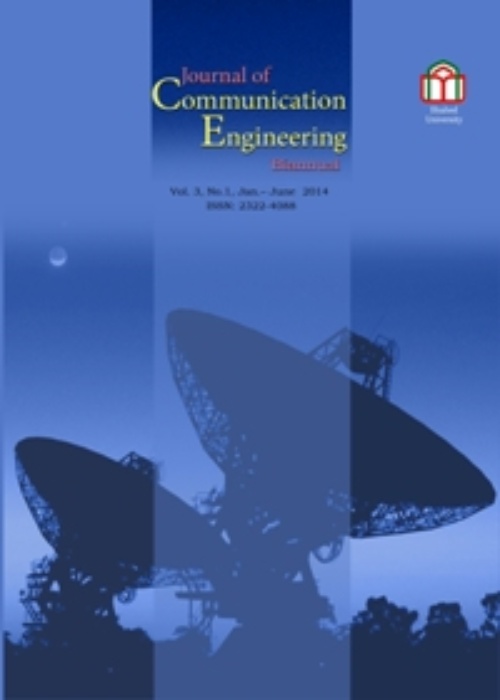A comparative study of precoding techniques for PAPR reduction of OFDM signals
Author(s):
Article Type:
Research/Original Article (دارای رتبه معتبر)
Abstract:
Orthogonal frequency division multiplexing (OFDM) is an attractive approach for multi-channel transmission. Due to some advantages such as high spectral efficiency, simplicity in channel equalization, and robustness to the fading channel, the OFDM technique has been generally used in many wireless communication devices. Besides these advantages, the OFDM systems usually experience a high peak-to-average power ratio (PAPR). As a result of the high PAPR, the OFDM signal is clipped during the passing via a non-linear power amplifier. The precoding techniques decrease the autocorrelation of the input data symbols to mitigate the high PAPR. In this paper, we compare WHMT, VLMT, DCMT, DHMT, DFMT, ZCMT, and CVMT precoding approaches in terms of autocorrelation and PAPR reduction performance. We demonstrate that the serial combinations of both ZCMT and CVMT precoding matrices with the IFFT matrix cancel the impact of each other when their dimensions are the same. In this case, a sparse matrix is produced and hence the PAPR of the OFDM signal is remarkably reduced. This issue is proved by the mathematical calculations and verified by the simulation results. It is also presented that DFMT, ZCMT, and CVMT precoding schemes have almost the same PAPR reduction performance and they are the best among their counterparts.
Language:
English
Published:
Journal of Communication Engineering, Volume:10 Issue: 1, Winter-Spring 2021
Pages:
1 to 15
https://www.magiran.com/p2539550
سامانه نویسندگان
از نویسنده(گان) این مقاله دعوت میکنیم در سایت ثبتنام کرده و این مقاله را به فهرست مقالات رزومه خود پیوست کنند.
راهنما
مقالات دیگری از این نویسنده (گان)
-
Increasing the Performance of OFDM Systems by PAPR Reduction in PTS Technique using Election Optimization Algorithm
*, Hojjat Emami
Signal and Data Processing, -
Diffusion fractional tap-length algorithm with gradient-based cooperation to enhance the performance of adaptive networks with noisy links
Ghanbar Azarnia *, Abbbas Ali Sharifi
Journal of Soft Computing and Information Technology,


